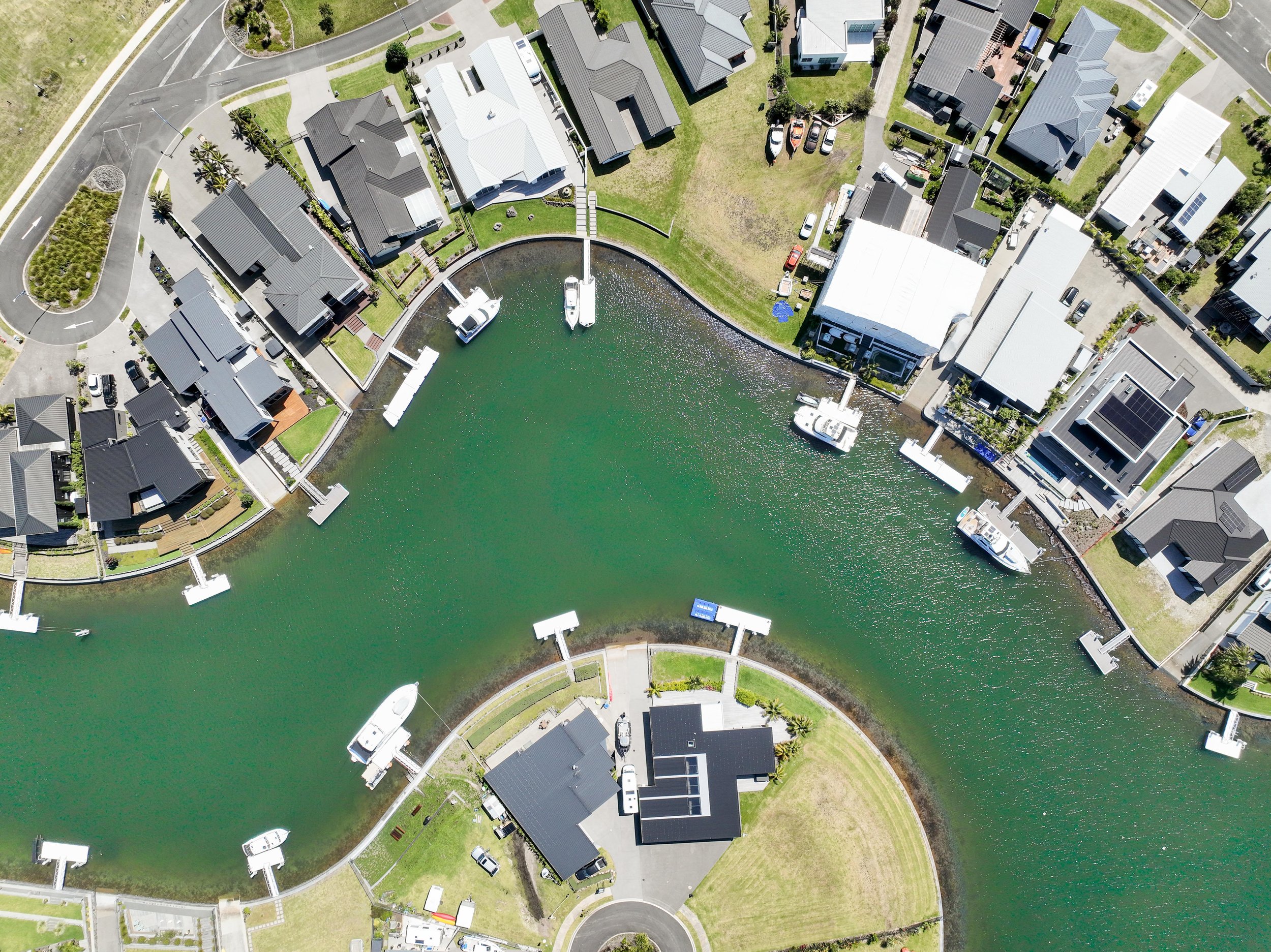
Canal Design
Stage 1 Canal Design Overview
Stage 1 of the canal, extending up to the lock, is designed to handle substantial boat traffic, supporting 74 canal-front lots, over 230 marina vessels, visiting boats, and trailer boats accessing the public ramp. The tidal flow in this area is unhindered, with a range of 2 meters between Mean High Water Spring (MHWS) and Mean Low Water Spring (MLWS). Tide levels can vary due to factors like air pressure, wind conditions, rainfall, and occasionally distant tsunamis. The Highest Astronomical Tide (HAT) reaches 400mm above MHWS under standard atmospheric pressure, but lower pressure combined with easterly winds can push water levels above the revetment wall cap.
Locked Stages: Stage 2 and beyond.
Stages 2 and beyond incorporate a lock and weir system to maintain higher tide levels in canals above the lock. The weir is positioned 600mm below Mean High Water Spring (MHWS), allowing enough tidal exchange to sustain excellent water quality.
Revetment Wall Structure
The revetment wall is a durable, permeable, hand-laid stone structure that alleviates hydraulic pressure differences caused by rising and falling tides or increased groundwater from rainfall. It is built with a foundation buried 1 meter below canal soils and slopes at a gradient of 1:3 to the canal floor. The slope is covered with geotechnical cloth and rock rip-rap to prevent erosion and ensure wall stability.
Soil Conditions and Standards
The soils in this development area consist mainly of fine to medium-grain permeable sands with occasional shell and mud layers. Soil strength is assessed before construction, and preloading is used as needed to compress weaker soils and meet New Zealand Standards for standard two-story housing. Heavier structures may need specialized engineering. Standards are regularly reviewed and updated, and additional work is performed at each stage to ensure compliance.
Sea Level Rise
The District Council is bound by National Policy Statements to set minimum floor levels when issuing Building Permits. These are set with healthy margins to address risk of inundation well into the future (100yrs plus). Minimum floor levels (2023) are set at 2m above HAT.
It’s worth noting Hopper Developments undertook its first canal development in the Coromandel, Pauanui Waterways, in 1993, and since have been unable to find any notable change in the sea level over the past 30 years.

